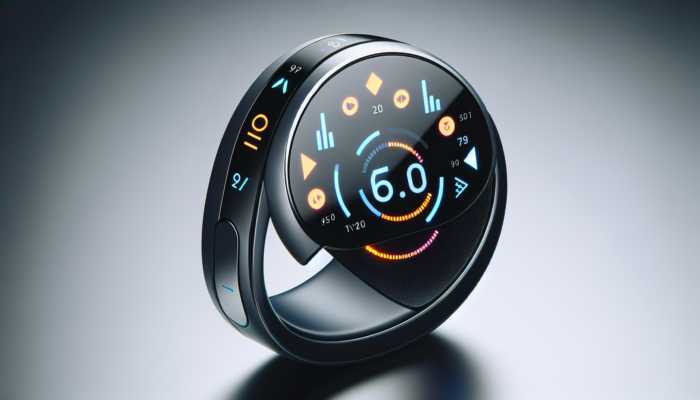Last Updated on 13/05/2025 by Admin
Revolutionary Noise Cancellation Technologies for Superior Hearing
The capacity to hear clearly in any environment is essential for effective communication. By 2025, the integration of artificial intelligence in hearing aids has transformed user experiences, particularly through sophisticated noise cancellation techniques. Hearing aids that incorporate state-of-the-art AI algorithms prioritize speech clarity while significantly reducing distracting background noises. This innovation creates an enjoyable auditory experience across diverse environments, ranging from the hustle and bustle of busy city streets to the tranquility of peaceful parks, enhancing everyday interactions and making communication smoother for users.
Dynamic Real-Time Noise Reduction for Enhanced Conversations
Picture yourself in a lively café, where the clamor of other patrons drowns out your conversation partner’s voice. Traditional hearing aids often struggle in such noisy surroundings. However, AI-powered hearing aids in 2025 introduce robust real-time noise reduction capabilities. These advanced AI algorithms analyze sound waves in real time, effectively filtering out background noise and significantly enhancing speech clarity. This feature allows users to engage in conversations effortlessly, making social interactions more enjoyable and less stressful, thereby fostering improved relationships and communication.
Furthermore, the advantages of real-time noise reduction extend beyond casual settings. In professional environments, clear communication is integral to success. Research indicates that individuals utilizing hearing aids with real-time noise reduction report enhanced comprehension and reduced fatigue during meetings. A substantial majority of users have noted a remarkable improvement in their ability to follow discussions, regardless of the setting. This cutting-edge technology not only amplifies desired sounds but also adapts intelligently to the environment, ensuring optimal performance in any situation, making it a vital tool for effective communication.
Personalized Adaptive Learning Systems for Tailored Hearing Experiences
Personalization is at the forefront of today’s technological advancements, and hearing aids are no exception. AI-driven adaptive learning systems in hearing aids gather data from users’ daily interactions. Over time, these systems learn from the user’s preferences and the auditory landscape of their environments. This results in a customized auditory experience that evolves continuously, ensuring maximum satisfaction. For instance, if a user frequently attends concerts, the hearing aid will learn to enhance music frequencies, providing an immersive auditory experience that resonates with their lifestyle.
The significance of adaptive learning further extends to changes in lifestyle. A user transitioning from a quiet home office to a bustling restaurant will find that their hearing aid automatically adjusts its settings for optimal sound clarity. Such intelligent systems promote independence and confidence, empowering users to navigate diverse environments without the anxiety of missing critical auditory cues, ultimately enhancing their overall quality of life and interactions in various situations.
Advanced Multi-Source Noise Management for Clearer Conversations
The ability of AI to discern multiple sound sources is revolutionary for hearing aid users. With sophisticated multi-source noise management, hearing aids can differentiate between various sounds, prioritizing speech while minimizing irrelevant noises. For example, during a family gathering, the joyful sounds of children’s laughter, the clinking of dinnerware, and background music all compete for attention. AI technology in 2025 ensures that only the voices of loved ones are amplified, allowing users to engage in meaningful conversations without distractions, significantly enhancing their social interactions.
This advanced technology not only improves personal interactions but also has vital implications for user safety. Users can hear essential sounds, such as sirens or approaching vehicles, while still participating in conversations. The ability to filter out unwanted noise creates a balanced auditory environment, facilitating easier navigation through both social and public spaces, which is crucial for maintaining safety and awareness in various settings.
Effective Wind Noise Suppression for Outdoor Enjoyment
Wind noise can pose a significant challenge for hearing aid users, often leading to frustration and discomfort during outdoor activities. In 2025, AI-driven wind noise suppression technology effectively addresses this issue. By dynamically adjusting noise cancellation algorithms in response to changing wind conditions, hearing aids can provide clearer audio even in outdoor settings. Imagine enjoying a day at the beach or hiking in nature; with advanced wind noise suppression, users can relish conversations and ambient sounds without the interference of gusting winds, enhancing their overall outdoor experience.
Wind noise suppression is particularly crucial for active users who engage in outdoor sports or recreational activities. Studies have shown that users participating in outdoor pursuits report higher satisfaction levels when utilizing hearing aids equipped with this technology. This innovative feature allows users to fully embrace their active lifestyles, significantly enhancing their overall quality of life and enjoyment in various outdoor environments.
Proactive Feedback Cancellation for Improved Listening Experiences
Feedback loops in hearing aids can often produce irritating whistling sounds, which can be distracting and deter users from wearing their devices altogether. Thankfully, AI innovations in 2025 incorporate advanced feedback cancellation algorithms that efficiently detect and eliminate these feedback loops. By continuously monitoring sound input, the hearing aids adjust proactively to prevent feedback before it occurs, ensuring a seamless auditory experience.
This proactive approach to feedback management not only enhances the listening experience but also instills confidence in users regarding their devices. A clear and uninterrupted auditory experience fosters greater independence and encourages users to engage actively in their communities. Ultimately, effective feedback cancellation technology ensures that users can enjoy clear sound without interruptions, significantly improving their quality of life.
Customizable and Personalized Sound Profiles for Every User
In the rapidly advancing field of auditory technology, personalization is crucial. The hearing aids of the future leverage AI to provide users with customizable sound profiles tailored to their unique hearing preferences and environmental needs. This ensures that each user receives an auditory experience that is uniquely suited to their hearing capabilities and lifestyle, significantly enhancing their overall quality of life and satisfaction with their devices.
Flexible Customizable Frequency Settings for Optimal Listening
The auditory landscape is anything but uniform; individuals experience varying degrees of hearing loss at different frequencies. The AI advancements in hearing aids in 2025 empower users to customize frequency settings through intuitive mobile applications. This capability allows users to adjust treble and bass levels according to personal preferences, resulting in a nuanced sound experience that resonates with their specific hearing needs.
For example, a user who struggles to hear high frequencies can increase treble settings, while another individual may prefer a richer bass sound in musical environments. This level of personalization not only transforms the user experience but also provides a tailored auditory companion that enhances daily activities, from enjoying music to participating in engaged discussions, enhancing overall communication and enjoyment.
Automatic Sound Optimization for Effortless Hearing Adjustments
Gone are the days of manual adjustments for varying environments. AI-integrated hearing aids now enable automatic sound optimization, continuously analyzing the surroundings and adjusting sound settings accordingly. This advancement plays a crucial role in ensuring that users receive optimal auditory experiences, regardless of their environment.
Imagine walking from a quiet library into a bustling street; the hearing aids seamlessly transition from amplifying soft sounds to filtering out the noise of traffic. This automatic adjustment is a significant leap forward for those who may feel overwhelmed by constant manual changes. This technology not only enhances convenience but also ensures that users remain engaged and informed in their surroundings, thereby boosting their confidence in social settings and daily interactions.
Preset Sound Environments for Effortless Listening Experiences
AI technology equips modern hearing aids with preset sound environments designed for specific situations, such as quiet rooms, busy streets, or concert venues. By selecting a preset, users can effortlessly switch sound profiles, ensuring they always enjoy the best listening experience available. This feature is particularly advantageous for users who frequently transition between diverse environments throughout their day.
For instance, during a music concert, the preset optimized for music will enhance the auditory experience, allowing users to fully appreciate the performance without distortion or distraction. This innovation highlights the versatility of contemporary hearing aids, ensuring they are not just functional but also serve as a source of enjoyment and engagement in various auditory experiences, thereby enriching the user’s lifestyle.
Cutting-Edge Enhanced Speech Recognition for Clear Communication
Effective communication is foundational to human interaction, and in 2025, AI has dramatically enhanced the speech recognition capabilities of hearing aids. These advancements facilitate easier engagement in conversations, even in challenging auditory settings. Enhanced speech recognition technology allows users to experience clearer communication, significantly bridging the gap between those with hearing loss and their auditory environments.
Context-Aware Speech Processing for Precise Amplification
AI’s context-aware speech processing considers the user’s environment, adjusting the amplification of speech based on surrounding sounds. This means that in noisy settings, such as bustling restaurants or crowded offices, the hearing aids can prioritize speech, ensuring that users can still engage in conversations without frustration or miscommunication.
For example, if two people are conversing in a café filled with loud music, the hearing aids can discern speech frequencies and volumes, amplifying them while diminishing the impact of the music. This capability significantly enhances user satisfaction, allowing for natural conversations in environments that would typically challenge traditional hearing aids, thereby improving social interactions and overall communication.
Adaptive Language and Accent Recognition for Global Communication
In our increasingly interconnected world, individuals communicate in diverse languages and dialects. Hearing aids equipped with advanced AI can adapt to various languages and accents, facilitating clear communication across multiple interactions. This feature is particularly crucial for users who travel frequently or reside in multicultural settings, enabling them to engage effectively with others.
AI’s capacity to learn different accents means that these devices can recognize and amplify speech patterns that might otherwise go unnoticed. For instance, a user who often interacts with individuals speaking regional dialects will find that their hearing aids adapt accordingly, providing smoother conversational flow and reducing barriers to effective communication, thus enhancing social connections.
Innovative Voice Isolation Technology for Enhanced Clarity
Voice isolation technology significantly improves the user experience by focusing on amplifying the user’s voice during conversations or phone calls. This feature employs sophisticated AI algorithms to differentiate between the user’s voice and background noise, ensuring clarity even in distracting environments. This innovation is particularly beneficial in settings where multiple conversations occur simultaneously or where ambient noise is prevalent.
Imagine having a phone call while seated in a bustling café; voice isolation ensures that only your voice is amplified, facilitating effective communication without excessive background interference. Users report feeling more confident during interactions, knowing they can be heard clearly without straining to communicate, thus enhancing their overall interaction quality and experience.
Real-Time Speech Correction for Enhanced Communication
Recent advancements in AI have enabled real-time speech correction, a groundbreaking feature that enhances clarity and intelligibility for users with speech impediments. This technology can detect and correct speech errors instantaneously, ensuring that users can communicate effectively without the fear of being misunderstood.
This feature is particularly beneficial for those participating in professional or social settings. Research indicates that users with speech challenges who utilize real-time speech correction experience improvements in both their confidence and interactions with others, leading to a more fulfilling social life and enhanced communication skills.
Advanced Noise Cancellation Algorithms for Clear Auditory Experiences
The effectiveness of sophisticated noise cancellation algorithms is vital for ensuring that speech remains clear and understandable across various environments. Advanced algorithms are capable of filtering out background noise while preserving the integrity of spoken words. This is especially beneficial in dynamic settings where sounds are constantly changing, such as bustling markets or crowded public transport systems.
Users who rely on hearing aids equipped with advanced noise cancellation report a significant reduction in auditory strain, enabling them to participate in conversations without feeling overwhelmed. This development not only enhances the overall user experience but also promotes inclusivity and active participation in both professional and personal engagements, creating a more connected experience for users.
Seamless Connectivity for Enhanced User Experience
Connectivity is a crucial aspect of modern technology, and in 2025, hearing aids have become integral to the ecosystem of personal devices. Seamless connectivity allows users to access numerous features and enhances their overall experience, bridging the gap between hearing aids and everyday technology.
Effortless Integration with Smart Devices for Enhanced Functionality
Hearing aids in 2025 offer seamless integration with smartphones and other smart devices, greatly enriching the user experience. Users can easily manage settings, track usage, and receive notifications through intuitive apps designed to enhance their auditory experience. This integration empowers users to customize their hearing aids according to their preferences and needs.
For example, users can adjust volume levels or switch sound profiles through their smartphones without needing to physically manipulate the hearing aids. This level of convenience is particularly beneficial for individuals with mobility challenges, as it allows for effortless adjustments in various situations, fostering a more user-friendly experience.
High-Quality Wireless Audio Streaming for Enjoyment and Accessibility
Gone are the days of cumbersome wires and awkward setups; modern hearing aids allow users to stream audio directly from their devices. Whether listening to music, watching movies, or making phone calls, users can enjoy high-quality sound transmission through their hearing aids. This feature significantly enriches daily life, making entertainment more accessible and enjoyable.
Users can now experience their favorite songs with impressive clarity, ensuring they don’t miss any nuances in the music. Moreover, the ability to receive phone calls directly through hearing aids enhances communication, allowing users to stay connected without struggling with traditional phone speakers, thereby improving their overall lifestyle.
Remote Adjustments and Updates for Continuous Optimization
With the rise of telehealth services, audiologists can now make remote adjustments to hearing aids, ensuring users receive ongoing optimization without needing to visit a clinic. This technological advancement significantly benefits users, particularly those living in rural areas or with mobility limitations.
Receiving remote updates means users can access the latest features and improvements without the hassle of scheduling in-person appointments. This innovation greatly enhances user satisfaction, as adjustments can be made swiftly and efficiently, ensuring a consistently high-quality auditory experience that meets users’ needs.
Bluetooth Compatibility for Versatile Connectivity Options
The advent of Bluetooth technology has transformed connectivity, and modern hearing aids benefit tremendously from this advancement. Users can easily pair their hearing aids with a wide range of devices, including tablets, computers, and smart TVs. This compatibility enhances the user experience by making it simpler to enjoy various forms of media.
For example, users can enjoy crisp sound while watching movies on their smart TVs, making the experience much more immersive and enjoyable. The convenience of Bluetooth connectivity enhances the functionality of hearing aids, ensuring that they serve as versatile tools for both communication and entertainment, enriching the user’s overall experience.
Smart Predictive Maintenance for Optimal Device Performance
In a technology-driven world, preventive care is essential. AI-powered predictive maintenance for hearing aids ensures users enjoy optimal performance without the anxiety of unexpected failures. By utilizing data-driven insights and analytics, users can effectively maintain their devices, ensuring longevity and reliability.
Comprehensive Battery Life Monitoring for User Convenience
Battery life is a critical aspect of hearing aid functionality. AI tracks usage patterns and predicts when the hearing aid will require recharging or replacement. This proactive approach allows users to plan ahead and avoid the inconvenience of sudden battery failures, ensuring that their devices are always ready for use when needed.
For instance, if a user frequently participates in long social events, the hearing aids will alert them to battery levels, allowing for timely recharging. This data-driven insight fosters a sense of reliability and eases concerns about being caught unprepared in important situations, enhancing the overall user experience.
Insightful Performance Analytics for Informed Device Management
Users can benefit from performance analytics provided by their hearing aids. These insights assist users in understanding how their devices are functioning while highlighting areas that may require attention. By receiving regular performance reports, users can make informed decisions regarding maintenance and upgrades, ensuring their hearing aids remain in optimal condition.
For example, a user may notice patterns indicating that their hearing aids perform better in specific environments, allowing them to adjust their usage accordingly. This level of awareness not only enhances the user experience but also promotes a proactive approach to hearing health, ensuring that users are actively engaged in their auditory wellness.
Proactive Fault Detection for Reliable Device Performance
AI’s ability to identify potential issues before they escalate is revolutionary for hearing aid users. Proactive fault detection capabilities ensure consistent performance by alerting users to necessary adjustments or repairs before they impact functionality.
This innovation is especially crucial for users who rely heavily on their hearing aids for daily communication. By catching issues early, users can prevent disruptions in their auditory support, ensuring that their devices remain reliable. The peace of mind that comes with knowing potential faults are being monitored enhances user satisfaction and confidence, allowing for a worry-free experience.
User-Friendly Interfaces for Enhanced Accessibility
User experience is paramount in technology, and hearing aids are no exception. In 2025, hearing aids come equipped with user-friendly interfaces that make managing settings intuitive and straightforward. This innovation is particularly beneficial for older adults or individuals who may be less familiar with complex technology.
Intuitive Control Apps for Simplified Device Management
Mobile applications designed for hearing aids feature intuitive controls that simplify the management of settings. Users can easily navigate through options, adjusting volume levels, sound profiles, and other features with just a few taps. This convenience promotes a positive relationship between users and their devices, ensuring they feel empowered to customize their auditory experience according to their preferences.
The ease of use offered by these apps is crucial for users who may feel overwhelmed by technology. With clear instructions and straightforward interfaces, users can explore features at their own pace, boosting their confidence and satisfaction with their hearing aids while enhancing their overall experience.
Voice Command Features for Enhanced Accessibility
Voice command capabilities enhance accessibility by allowing users to control their hearing aids using simple voice commands. This feature is particularly beneficial for individuals with mobility challenges, as it eliminates the need for physical adjustments.
Imagine being able to say, “Increase volume,” and having the hearing aids respond immediately. This level of convenience fosters a seamless user experience, ensuring that users can easily engage with their devices in any situation, whether at home or on the go, enhancing their quality of life.
Comprehensive Feedback and Support Systems for Optimal User Experience
AI-driven feedback and support systems provide users with real-time assistance, helping them optimize their hearing aid experience. By leveraging technology, users can access guidance and troubleshooting tips quickly, enhancing user satisfaction and ensuring their devices function correctly.
For instance, if a user encounters an issue, they can receive immediate feedback through the app, along with potential solutions. This proactive support approach fosters a sense of trust and reliability, ensuring that users feel supported throughout their hearing health journey, ultimately improving their overall experience.
Customizable Interface Options for Personalization
The ability to personalize hearing aid interfaces is another exciting development in user experience. Users can choose from various display themes and control layouts, tailoring their devices to suit their preferences. This level of customization fosters a sense of ownership and comfort, significantly enhancing the overall experience.
Whether users prefer a minimalist design or vibrant colors, the flexibility in customization ensures that each individual can connect with their hearing aids in a meaningful way. This attention to detail enhances user engagement and satisfaction, ensuring they feel confident and comfortable in their device usage.
Simplified Menu Navigation for Effortless Access
User-friendly menu navigation is essential for enhancing the auditory experience. In 2025, advanced hearing aids prioritize straightforward menu structures, allowing users to access and adjust settings quickly and efficiently. This simplicity is especially beneficial for users who may encounter challenges with complex technology.
Clear, concise menu navigation reduces frustration and empowers users to explore their devices fully. By streamlining the user experience, hearing aids become indispensable tools that enhance daily life rather than sources of confusion, promoting a positive interaction with technology.
Frequently Asked Questions About Modern Hearing Aid Innovations
What are the primary advantages of AI in hearing aids?
AI enhances hearing aids by providing advanced noise cancellation, personalized sound profiles, and improved speech recognition, making communication clearer and more enjoyable across various environments, thus greatly benefiting users.
How does adaptive learning function in hearing aids?
Adaptive learning systems in hearing aids analyze users’ environments and preferences, allowing devices to automatically adjust settings for optimal hearing over time, ensuring a tailored auditory experience.
Can modern hearing aids effectively filter out background noise?
Absolutely! Contemporary hearing aids utilize advanced AI algorithms to filter out background noise while prioritizing speech, enabling clearer communication in noisy settings, which is essential for effective interactions.
What is voice isolation technology in hearing aids?
Voice isolation technology allows hearing aids to amplify the user’s voice while reducing background noise, enhancing clarity during conversations and phone calls, significantly improving communication experiences.
Do hearing aids feature preset sound environments?
Yes, modern hearing aids come with preset sound environments optimized for specific scenarios, such as quiet rooms or busy streets, enabling users to switch settings effortlessly for an ideal listening experience.
How can users control their hearing aids effectively?
Users can control their hearing aids through intuitive mobile applications, voice commands, or simplified interface options, making adjustments quick and easy, thereby enhancing user satisfaction.
What role does predictive maintenance play in modern hearing aids?
Predictive maintenance helps users monitor battery life, performance analytics, and potential faults, ensuring that hearing aids function optimally and reliably, which is vital for user confidence and satisfaction.
How do hearing aids connect to other devices seamlessly?
Modern hearing aids feature Bluetooth technology, allowing seamless connectivity with smartphones, tablets, and other smart devices, enhancing the user experience for communication and entertainment purposes.
What is real-time speech correction technology?
Real-time speech correction technology allows hearing aids to detect and correct speech errors instantly, enhancing clarity for users with speech impairments during conversations, significantly improving their communication skills.
What are the benefits of customizable frequency settings in hearing aids?
Customizable frequency settings enable users to adjust the sound profile according to their specific hearing needs, providing a personalized auditory experience that enhances clarity and comfort significantly.
Discover more about our journey on X!
The post AI Enhances Sound Quality in Hearing Aids by 2025 appeared first on The Microsuction Ear Wax Removal Network.
















